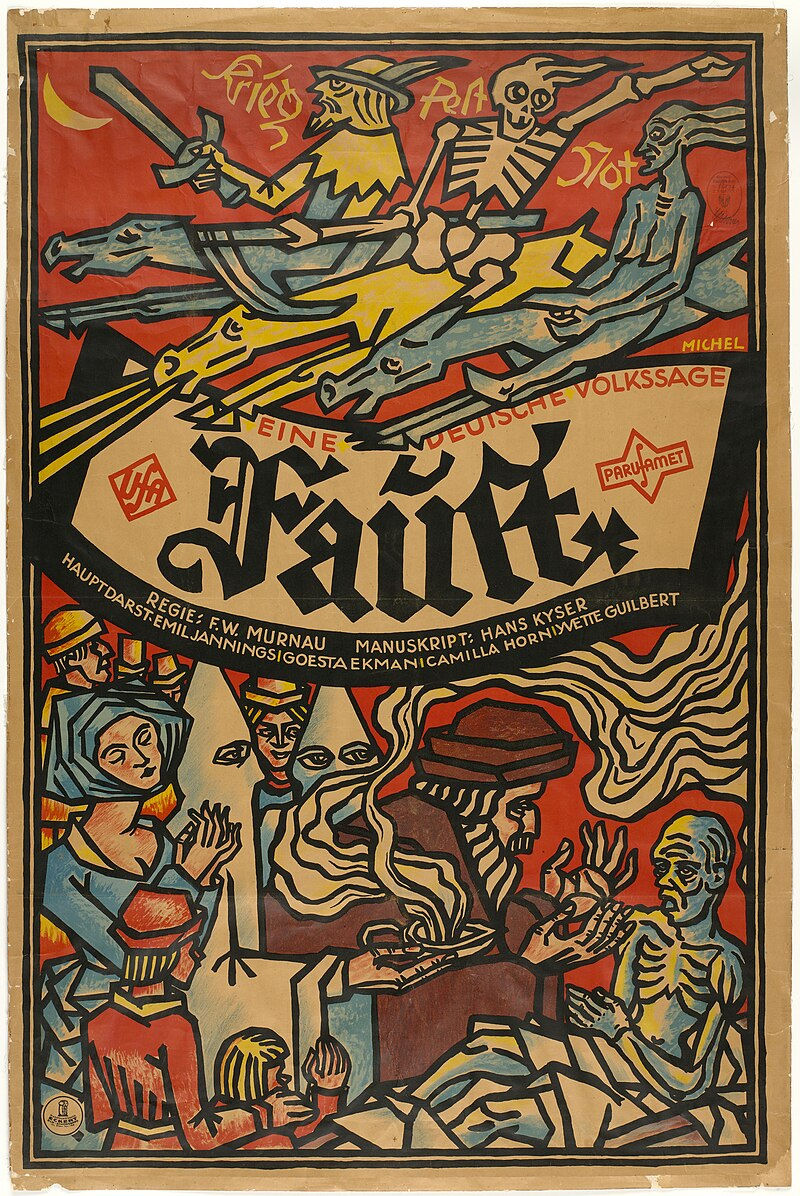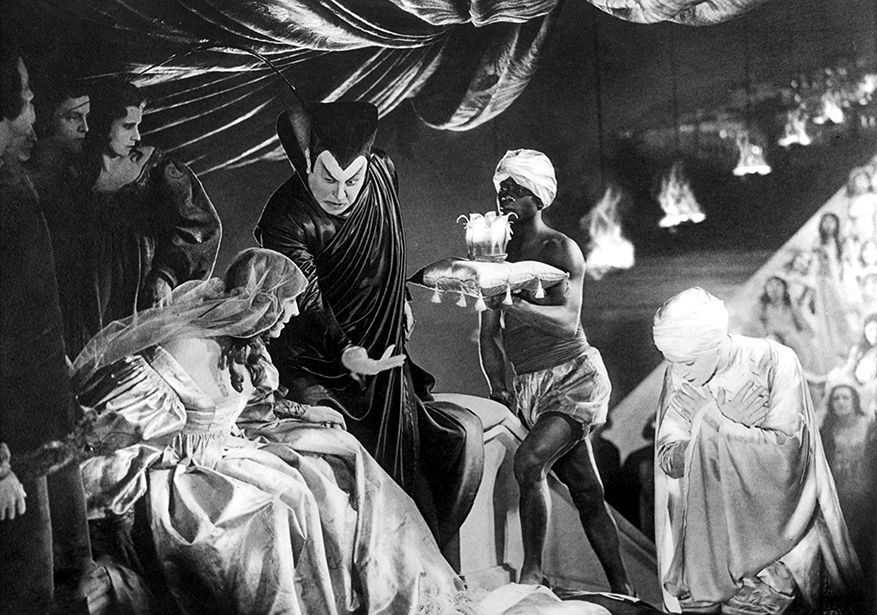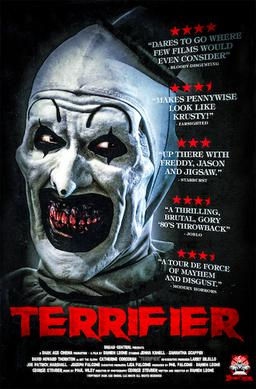Faust (1926) review
- Jeremy Kelly
- Oct 1, 2024
- 4 min read
It’s October again! Take a break from other pressing matters and enjoy another month of horror movie reviews from yours truly, for the 13th straight year. Last year it was all cult hits, but now we're back to a mostly random collage throughout the history of cinema, in chronological order.
Unfortunately, I wasn’t as attentive in my preparation, so this is going to be an abridged version of my usual month-look marathon. This has happened before, but in case you’re new here or you’ve forgotten, it’s going to be 16 movies, one every other day, from now to Halloween. Then in the future, I’ll round out the remaining 15 to fill up the usual 31. Life simply gets in the way sometimes, what can I tell you?
So let’s waste no more time; may the horror begin!
1. Faust (1926)
Directed by: F.W. Murnau
Produced by: Erich Pommer
Screenplay by: Hans Kyser
Starring: Gösta Ekman, Emil Jannings, Camilla Horn, Wilhelm Dieterle, Frida Richard, Yvette Guilbert

F.W. Murnau is regarded as one of the most influential filmmakers in cinema history for his work during the silent era of the 1920s. He’s best known among horror fans for his helming of the German Expressionist classic “Nosferatu,” the oldest surviving adaptation of Bram Stoker’s Dracula novel. But his last film before emigrating to the United States was “Faust,” based on Johann Wolfgang von Goethe’s classic 19th century play. It’s not much of a horror movie as it is a fantasy tragedy, but there is an emphasis on good versus evil, and it has some really good monstrous special effects for the time period, so I’m giving it a review. It’s a film that deserves more attention anyway; it’s a grand, engrossing and visually stimulating piece of work.
The plot involves the demon Mephisto (Emil Jannings) making a bet with an Archangel (Werner Fuetterer) that he can corrupt and destroy a righteous man’s soul, in exchange for dominion of Earth. He delivers a plague to a village where the elderly alchemist Faust (Gösta Ekman) lives; his efforts and prayers come up short until Mephisto offers his services, which he accepts. But of course, with every offer, there comes a price. Faust can now cure the villagers, but they reject him when he cannot face a Holy Cross; he regains his youth and sows his wild oats, but when he attempts to settle down with the beautiful Gretchen (Camilla Horn), Mephisto uses every bit of his cunning to drive the two of them apart, even if it means sacrificing further innocent lives.

Okay, so the story is admittedly a little bloated, and my description makes it sound more action-packed than it really is, but it’s a fairly singular narrative on Faust and his literal demons. The simplistic fairy tale-like structure doesn’t leave much room for nuance, so don’t expect a very in-depth character study. It’s more about watching the concept come to life with this really creative visual style; I’ve talked about German Expressionism before in films like “The Cabinet of Dr. Caligari” and how it creates this surreal, dreamlike environment with off-kilter architecture and exaggerated shadows, and we see here how it incorporates the characters with ghostly pale complexions, particularly in the plague depictions. The production design and cinematography are some of the most ambitious of the era, with each new setting providing ample opportunities for sweeping camera angles and luscious aesthetics, like Mephisto literally towering over the plagued village, and the supernatural costumes. After the success of Murnau’s “The Last Laugh,” the studio basically gave him an unlimited budget, and this was the most expensive German film until Fritz Lang’s “Metropolis” came out only a few months later.
If anyone had a face for silent films, it was Emil Jannings as Mephisto, giving us a myriad of appropriately demented expressions and really selling his slimy, sinful nature. It’s the kind of cinematic performance that only really works without sound, as I imagine it would seem silly otherwise. Ultimately, Jennings’s talents failed to translate into talkies, and he spent a decade appearing in Nazi propaganda films, which quickly dried up after World War II. I don’t have as much to say about the rest of the cast; I think Gösta Ekman looks too frilly in Faust’s youth scenes, but nothing else really stands out about him as bad. Camilla Horn does solid work as Gretchen, really making you feel the grimness of her storyline; the poor girl’s life is basically ruined in a way that even Victor Hugo would call overkill.

There have been many stories since “Faust” inspired by the idea of a well-meaning protagonist making a deal with The Devil, such as “The Devil and Daniel Webster,” “Damn Yankees,” Bedazzled,” and that’s barely scratching the surface. It’s hard to convincingly portray a realistic circumstance that would see someone make the deal, but knowing what we know about religious fanaticism, I think it works at establishing the sort of desperation and cynicism needed. Faust can literally heal people he’s probably known for a long time, but just because it’s not in the name of God, they shun and even stone him. Gretchen ends up in a truly hopeless situation, on the streets with a dying baby in a blizzard, but just because she’s recognized as a harlot mocked in the stocks, nobody lends a helping hand. It’s one of those tales that’s quite damning of humanity, showing that deception and cruelty can lie in the friendliest faces, not just with Mephisto but anywhere.
So despite the pacing being not so smooth and some plot developments feeling out of place, this is a great bit of filmmaking, responsible for numerous innovative techniques that perfectly suck you into its mood; you’ll feel surrounded by darkness, fire and corruption, with its rudimentary yet still appealing special effects. The film slipped into the public domain because of copyright renewal failure, so it’s easy to find, and worth it as one of Murnau’s finest. After emigrating to Hollywood, he directed another all-time silent great, “Sunrise: A Song of Two Humans,” but also struggled to adapt to the sound era before tragically dying in a car accident at the age of 42. This movie wasn’t a commercial hit upon release but has now gained recognition as a genre classic, not just for its bold ingenuity but for conveying its story in a way that’s uncompromising but also quite beautiful; give it a watch and see for yourself.
My rating: 8.5/10





Comments